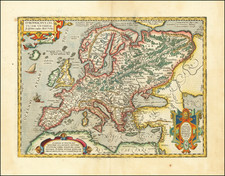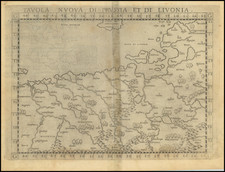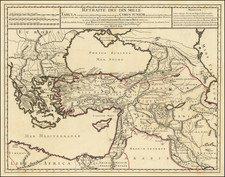Vibrant table of distances engraved by Tobias Conrad Lotter and published in Augsburg in the mid-18th century, offering an analytical representation of comparative distances between key European cities. Balancing cartographic precision with detailed artwork, the map presents an overview of Europe's urban networks during this era. The incorporation of allegorical figures and city depictions indicates Lotter's inclination to enliven data and visual appeal.
The 18th century witnessed considerable developments in European connectivity. Enhanced trade routes, both terrestrial and maritime, facilitated cultural exchanges and the dissemination of knowledge. In this context, the Poliometria functioned as a reference for travelers and merchants, highlighting the web of cities becoming more intertwined through various modes of exchange. The emphasis on German cities points to the region's central geographical role in Europe and its significance in commerce and culture.
The table's numerical grid showcases the evolving cartographic methodologies of the time. This grid system was designed to allow quick and accurate estimation of distances between cities, an essential tool for both travel and trade.
Tobias Conrad Lotter (1717-1777) is one of the best-known German mapmakers of the eighteenth century. He engraved many of the maps published by Matthaus Seutter, to whose daughter Lotter was married. He took over Seutter’s business in 1756. Lotter’s son, M. A. Lotter, succeeded his father in the business.












![[ World & Continents ] Typus Orbis Terrarum / Americae Sive Novi Orbis Nova Descriptio / Asiae Nova Descriptio / Africae Tabula Nova / Europae](https://storage.googleapis.com/raremaps/img/small/99250.jpg)
![[ First World War) ] The World Cannot Live Half Slave, Half Free -- The Prussian Blot -- 100,000,000 People Already Enslaved By Germany](https://storage.googleapis.com/raremaps/img/small/68731.jpg)
![[Fascist Organizations of Germany] Фашистские Организации Германии](https://storage.googleapis.com/raremaps/img/small/67801.jpg)